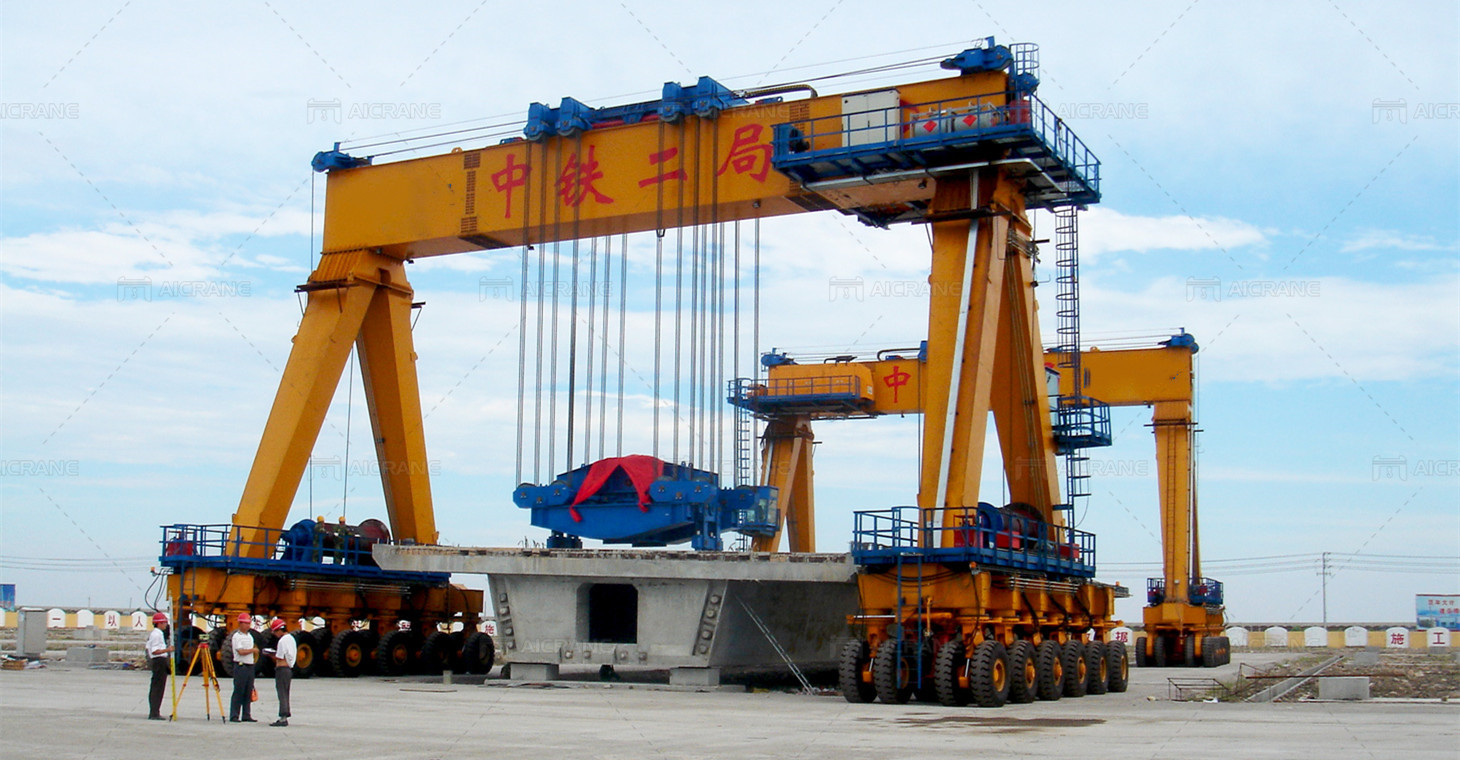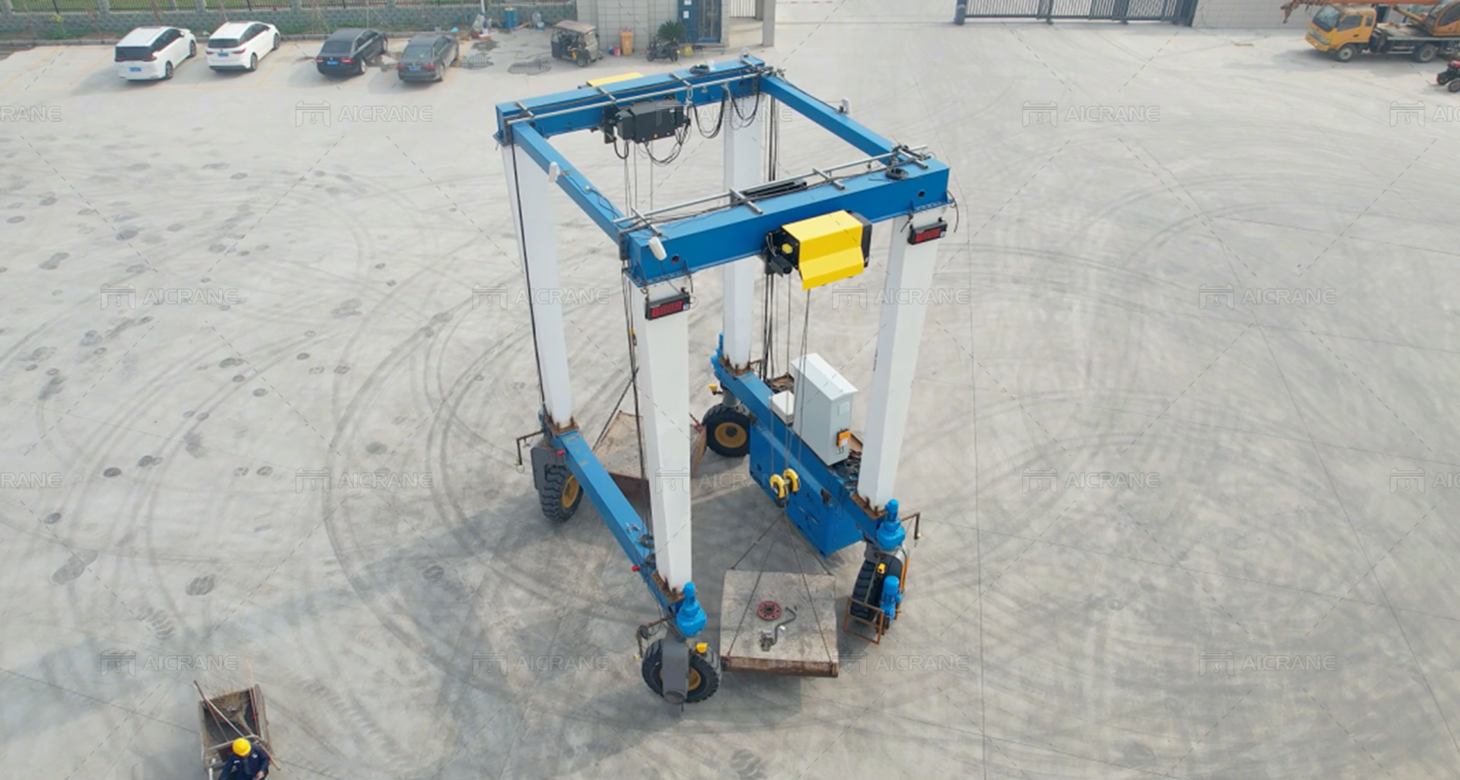Handling precast concrete efficiently and safely is critical in the construction and manufacturing industries. Two of the primary pieces of equipment used for this task are straddle carriers and rubber tyred gantry (RTG) cranes. Both have unique advantages and limitations that make them suitable for different scenarios. This passage explores these two options, comparing their functionalities, efficiencies, costs, and operational considerations in the context of precast concrete handling.

Straddle Carrier
Straddle carriers are versatile mobile equipment designed to lift and transport heavy loads, typically containers or large precast concrete components. They operate by straddling the load and lifting it from the bottom, using either hydraulic or electric mechanisms.
Advantages
Mobility and Flexibility: Straddle carriers are renowned for their mobility. They can move freely around a site without the need for tracks or fixed pathways, making them highly flexible for dynamic work environments.
Ease of Operation: The driving and control systems of straddle carriers are generally user-friendly, allowing operators to maneuver with precision in tight spaces. This is particularly beneficial in congested construction sites.
High Lifting Capacity: Modern straddle carriers can lift significant weights, making them suitable for handling large precast concrete segments used in infrastructure projects like bridges and buildings.
Speed: They offer quick lifting and transportation speeds, reducing cycle times and enhancing overall productivity. This speed is particularly advantageous in high-volume operations.
Customization: Straddle carriers can be customized with different lifting attachments to handle various shapes and sizes of precast concrete elements, increasing their utility in diverse applications.
Disadvantages
Operational Cost: The initial purchase cost and maintenance expenses for straddle carriers can be high. They require regular upkeep to ensure optimal performance, which can be costly over time.
Fuel Consumption: Traditionally diesel-powered, straddle carriers can have significant fuel consumption, although electric variants are becoming more common.
Limited Lifting Height: Compared to RTG cranes, straddle carriers typically have a lower lifting height, which might limit their use in stacking operations.
Rubber Tyred Gantry Crane
Rubber tyred gantry cranes are large, mobile cranes mounted on rubber tires. They are commonly used in ports and container yards but are also highly effective in handling precast concrete components in construction sites and manufacturing facilities.

Advantages
High Lifting Capacity and Height: Rubber tyred gantry cranes can lift very heavy loads to considerable heights, making them ideal for stacking operations and handling large precast concrete elements.
Stability and Strength: The design of rubber tyred gantry cranes offers exceptional stability, which is crucial when handling heavy and awkwardly shaped precast concrete pieces. Their robust structure ensures they can operate in challenging environments.
Operational Efficiency: Rubber tyred gantry cranes are designed for continuous operation, making them suitable for high-throughput environments. Their ability to span multiple lanes or work areas enhances operational efficiency.
Precision Handling: Advanced control systems in rubber tyred gantry cranes allow for precise positioning of precast concrete elements, which is essential for ensuring safety and accuracy during installation.
Disadvantages
Mobility Constraints: Unlike straddle carriers, rubber tyred gantry cranes are less mobile. They are restricted to predefined areas and require a significant amount of space to operate effectively.
Higher Initial Investment: The cost of purchasing and installing a rubber tyred gantry crane is substantial. Additionally, they require a stable and level surface to function optimally, which may necessitate additional site preparation.
Complex Maintenance: Rubber tyred gantry cranes have more complex mechanical and electrical systems, requiring specialized maintenance. This can lead to higher maintenance costs and potential downtime if issues arise.
Infrastructure Requirements: Rubber tyred gantry cranes often require dedicated infrastructure, such as reinforced surfaces and possibly power supply modifications if electric-powered, adding to the initial setup costs.
Comparative Analysis
Operational Context
Flexibility and Mobility: For sites that require frequent repositioning of lifting equipment or where space is constrained, straddle carriers offer superior flexibility and mobility. Rubber tyred gantry cranes are better suited to fixed or semi-fixed operations where their lifting height and capacity can be fully utilized.
Handling Capacity and Height: Rubber tyred gantry cranes are more advantageous for operations that require high stacking or lifting very heavy loads to significant heights. In contrast, straddle carriers are more suited to horizontal transport and lower lifting heights.
Cost Considerations
Initial and Operational Costs: Straddle carriers typically have lower initial costs compared to rubber tyred gantry cranes. However, their operational costs, particularly fuel and maintenance, can add up. RTG cranes, while more expensive initially, can offer lower operational costs, especially if electric-powered.
Infrastructure Investment: Rubber tyred gantry cranes may require substantial investment in infrastructure, such as reinforced concrete pads and power supply modifications. Straddle carriers, being more mobile, need less site preparation.
Efficiency and Productivity
Speed and Cycle Time: Straddle carriers generally offer faster cycle times for moving loads horizontally. Rubber tyred gantry cranes, however, excel in environments where high lifting and precise placement are needed.
Operational Downtime: Both types of equipment can face downtime due to maintenance, but rubber tyred gantry cranes might have longer downtime due to their complexity. Straddle carriers, with more straightforward mechanical systems, might be easier and quicker to service.
Choosing between a straddle carrier and a rubber tyred gantry crane for precast concrete handling depends on the specific operational needs, site constraints, and budget considerations. Straddle carriers offer unmatched flexibility and speed for horizontal movements in congested or dynamically changing environments. On the other hand, rubber tyred gantry cranes provide superior lifting capacity and height, making them ideal for high-volume, high-stacking operations.
Ultimately, the decision should be based on a comprehensive analysis of the project requirements, including the types of precast concrete elements being handled, the layout and constraints of the site, and the long-term operational goals. Both pieces of equipment have their distinct advantages and can significantly enhance productivity and efficiency in precast concrete handling when deployed appropriately. Choose a reliable manufacturer to purchase these products.
